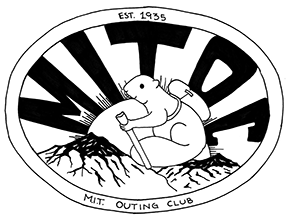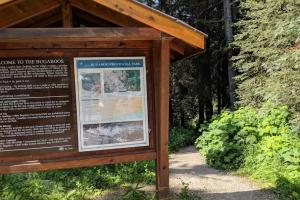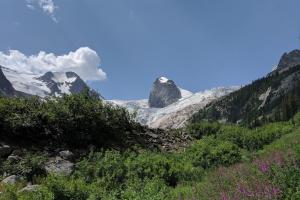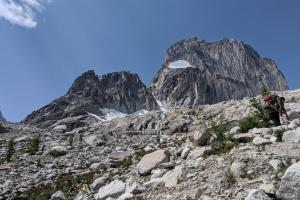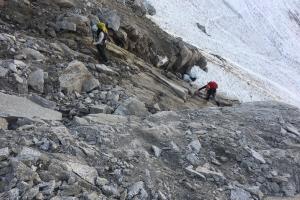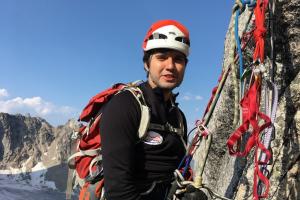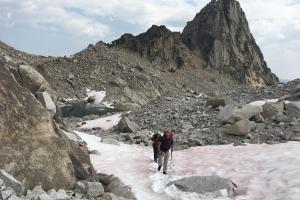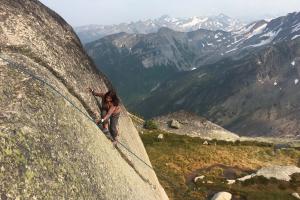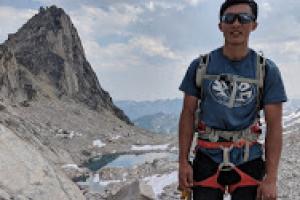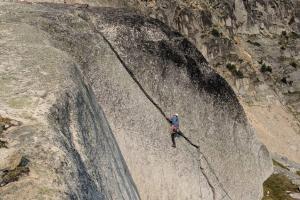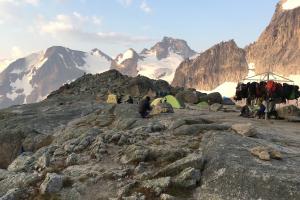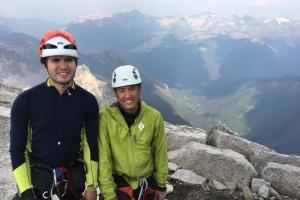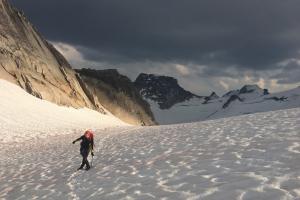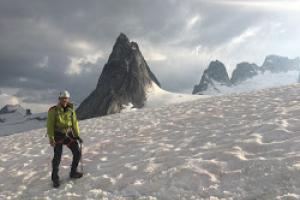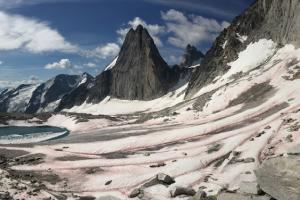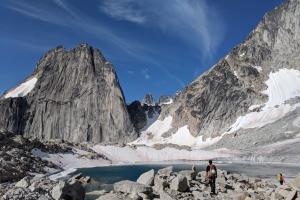Adventurer/s:
Dates of Trip:
I heard about The Bugaboos after I got introduced to big wall climbing in Yosemite 14 years ago. After learning how to spend a few nights on el Capitan, it seemed like the next step would be to take the game to the alpine. The Bugaboos were also known as the “poor man’s Patagonia”, and as broke college freshman, the “Bugs” were the perfect place for my next expedition. In 2006, I made my first trip to the “Bugs”. It was a trip full of learning, bad weather, and really good climbing! I promised myself that I would come back in a couple of years, but somehow, other places, and life got on the way! While other life goals and passions eventually took me away from pursuing high-performance climbing, bringing me to MIT, the memories and lessons of my first experiences high up on big walls drive me every day.
Last summer, after thirteen years since climbing at the Bugaboos for the first time, I decided to come back again. This time, we would try to climb the North Howser Tower, which is the tallest of the Howser Towers. The Howser Towers are perhaps more famous for South Howser’s Beckey-Chouinard route, one of the “50 Classic Climbs in North America”. Perhaps the biggest challenge of the North Howser is not the 3,000 ft of climbing, or the day-long approach through a crevassed glacier, but the unpredictable weather and frequent thunderstorms. The remoteness of the North Howser, and the constant changing weather patterns make it incredibly difficult to find a weather window that is long enough to climb such a long route with big wall techniques. To climb the North Howser, you have to move fast and light.
For this project, one of my longtime climbing partners from Mexico, Artemia Ramirez, and MITOC climbing partner Tony Zhu would be joining the trip. Tony and I had been training together and doing few climbs together around Boston for a few months before our August trip. The best time to climb at the Bugs is August, after the July storms, and before the snowmelt makes some of the approaches to sketchy. On July 26th, we flew into Calgary, AB, where we rented a car, and spent the night. The next day we bought supplies, and drove to Golden, BC, the closest town to the Bugs. We spent another night at Golden, packed our bags and made plans for the approach. The approach to base camp takes 4+ hours and is quite steep the whole way. Since we were spending a couple of weeks up at the Bugs, we were planning on bringing all of our food supplies with us. The base camp, Applebee Dome, is in an alpine environment, and is a bit rustic. There is untreated water, and an outhouse, but not much else.
To lighten our approach, we decided to split our loads into two, and do a couple of trips in a single day. The approach goes through an amazing scenery, transitioning from the lower forest, to the high alpine environment, and is always framed by the Bugs’ granite spires and glaciers. After hiking in with 50 pound backpacks, we were too exhausted to do another trip the same day. Unluckily for us, the weather forecast for our next approach day was looking great –which meant that our following days would not have such good weather. After spending a couple of days carrying loads to the base camp, we were finally ready to start acclimatizing to alpine climbs.
On our first climbing day, we decided to try another classic route from the area: Sunshine Crack, an 11 pitch 5.11 climb on Snowpatch Spire. The climbing in the Bugs is dispersed around granite spires emerging out of glaciers. Some of them require hour-long approaches, while others can take a couple of days to get to. Snowpatch spire is one of the closest walls to base camp, and one of the most popular ones. On our fist climbing day, we decide to only do 5 pitches of the 11, since our bodies are still recovering from the rough approach.
With deteriorating weather forecasts, we decide to postpone our plans for the North Howser until the second week. With some scattered thunderstorms, on our second climbing day, we decided to try some of the climbs around basecamp. Unfortunately for us, the weather forecast only got worse, and predicted snow and thunderstorms for a few days, after the next day. We decided to do a longer climb the next day, and then leave for a few days for some sport climbing at Banff, instead of staying at the basecamp with bad weather. The next day, Tony and I left early to climb “Furry Pink Arete”, an 8 pitch 5.10c route on Snowpatch spire. As most of the climbs at the Bugs, the route involved tricky route finding, some loose rock, and incredible pitches! While climbing the fifth pitch, a storm system was starting to build, but Tony and I decided to climb as fast as we could to avoid having to leave gear to get off the route. After gorgeous views from the top of the spire, we rapped the West Face rappel route, the Kraus-McCarthy.
The next day, we left our basecamp early in the morning. We decided to leave all of our trad gear, one of our tents, and much of our food and clothes up there to avoid hauling them up again in a few days. We were very happy and relieved by spending a few hours at Radium’s Hot Springs. We spent the next couple of days sport climbing at Cougar Canyon, close to Canmore, and at Lake Louise, close to Banff. After a few days away from the Bugs, we hiked back in. We were greeted by better weather, but mixed weather predictions for the next few days.
We quickly realized that we would not have enough time or good weather to attempt the North Howser. Apart from that, Artemia and I had been moving slowly on the approaches. We decided to do some long single day climbs instead, and leave the North Howser for a future trip. The next day, the three of us climbed “Left Dihedral” a 5-6 pitch 5.11+ at the Crescent Spires, the closest wall to basecamp. The climbing was incredible, with a tricky offwidth pitch that Tony climbed in the rain!
The next day would be our last day climbing at the Bugs, since our flight was departing a couple of days later. Tony and I decided to go back to Sunshine Crack to finish the whole route. The route is a classic! It involves wide cracks, and a number of incredibly fun roofs and hand cracks. After climbing the 11 pitches, we started rapping down. While pulling down the rope from the first rappel, one of our ropes got stuck. We tried to free it, Tony re-climbed part of the pitch, and was unable to free it. As we were considering cutting the rope, and contemplating a gnarly 11 pitch rappel for double ropes with one and a half ropes, Tony put his whole weight on the rope. To our surprise, the rope came loose, and we rigged our next rappel. After 10 more tense rappels, we were back on the glacier. We got back exhausted to camp almost at midnight, but we were incredibly satisfied by the route and the experience. The next morning, we packed our bags, and hiked down to the car to drive back to Calgary. While we did not climb our main objective for the trip, we were humbled, and incredibly grateful for having experienced such an incredible place. Being at the Bugaboos once again after 14 years, made me reflect on the past years, and reminded me to continue pushing myself everyday.
I am incredibly grateful for the support of the Collier Adventure Grant, and for the support of MITOC, MIT, and the MIT community.
